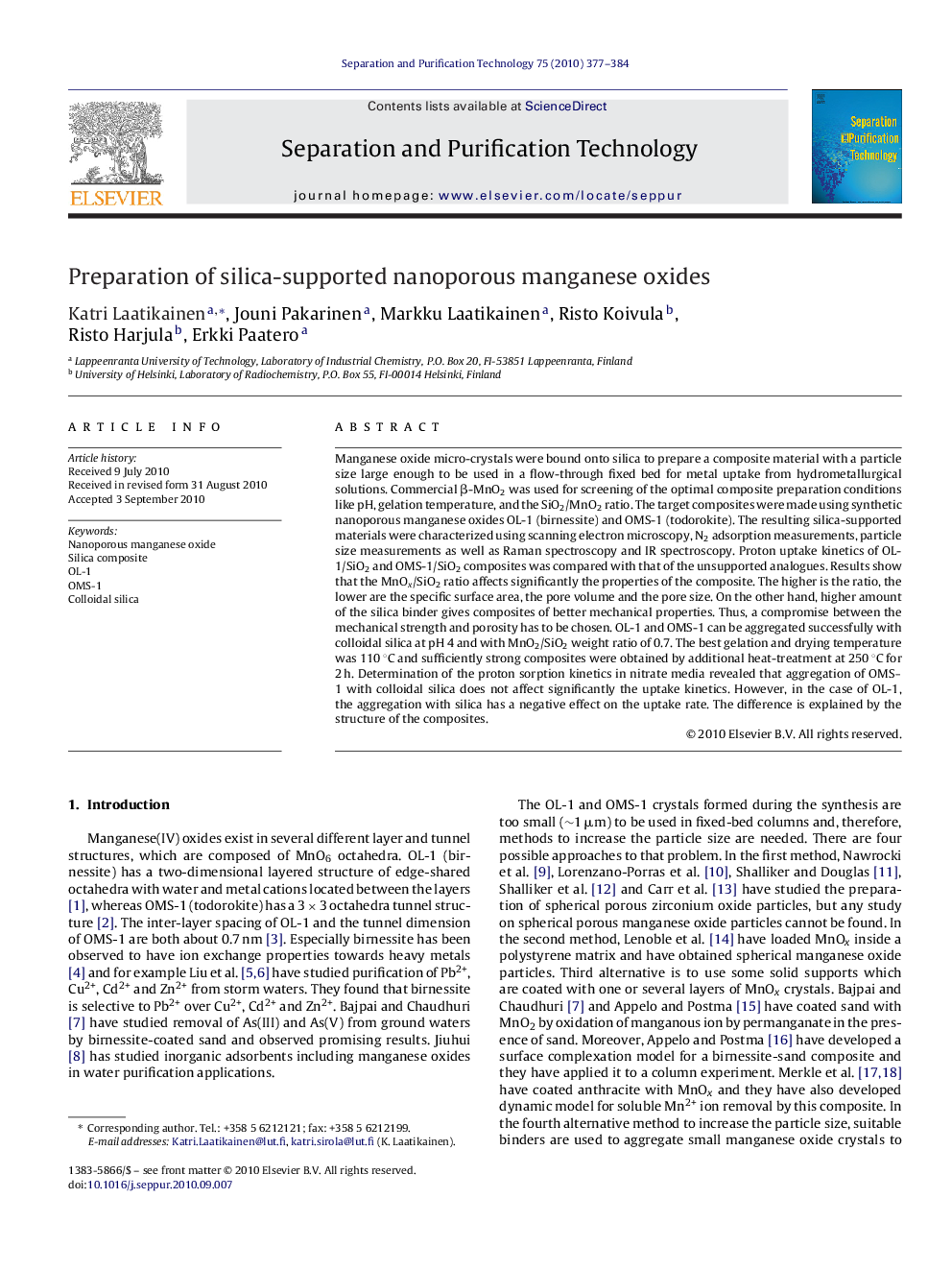| Article ID | Journal | Published Year | Pages | File Type |
|---|---|---|---|---|
| 642829 | Separation and Purification Technology | 2010 | 8 Pages |
Manganese oxide micro-crystals were bound onto silica to prepare a composite material with a particle size large enough to be used in a flow-through fixed bed for metal uptake from hydrometallurgical solutions. Commercial β-MnO2 was used for screening of the optimal composite preparation conditions like pH, gelation temperature, and the SiO2/MnO2 ratio. The target composites were made using synthetic nanoporous manganese oxides OL-1 (birnessite) and OMS-1 (todorokite). The resulting silica-supported materials were characterized using scanning electron microscopy, N2 adsorption measurements, particle size measurements as well as Raman spectroscopy and IR spectroscopy. Proton uptake kinetics of OL-1/SiO2 and OMS-1/SiO2 composites was compared with that of the unsupported analogues. Results show that the MnOx/SiO2 ratio affects significantly the properties of the composite. The higher is the ratio, the lower are the specific surface area, the pore volume and the pore size. On the other hand, higher amount of the silica binder gives composites of better mechanical properties. Thus, a compromise between the mechanical strength and porosity has to be chosen. OL-1 and OMS-1 can be aggregated successfully with colloidal silica at pH 4 and with MnO2/SiO2 weight ratio of 0.7. The best gelation and drying temperature was 110 °C and sufficiently strong composites were obtained by additional heat-treatment at 250 °C for 2 h. Determination of the proton sorption kinetics in nitrate media revealed that aggregation of OMS-1 with colloidal silica does not affect significantly the uptake kinetics. However, in the case of OL-1, the aggregation with silica has a negative effect on the uptake rate. The difference is explained by the structure of the composites.
Research highlights▶ Nano-porous manganese oxides OL-1 and OMS-1 can be aggregated to sufficiently large particles with colloidal silica and the composites have suitable properties for use e.g. as inorganic ion exchangers. ▶ The plate-like crystals of OL-1 form less uniform structure with silica and consequently, the specific surface area and pore volume of OL-1/SiO2 are lower than of OMS-1/SiO2. ▶ Aggregation of OL-1 and OMS-1 crystals with colloidal silica does not affect significantly the ion exchange rate by uptake kinetics of nitric acid.
